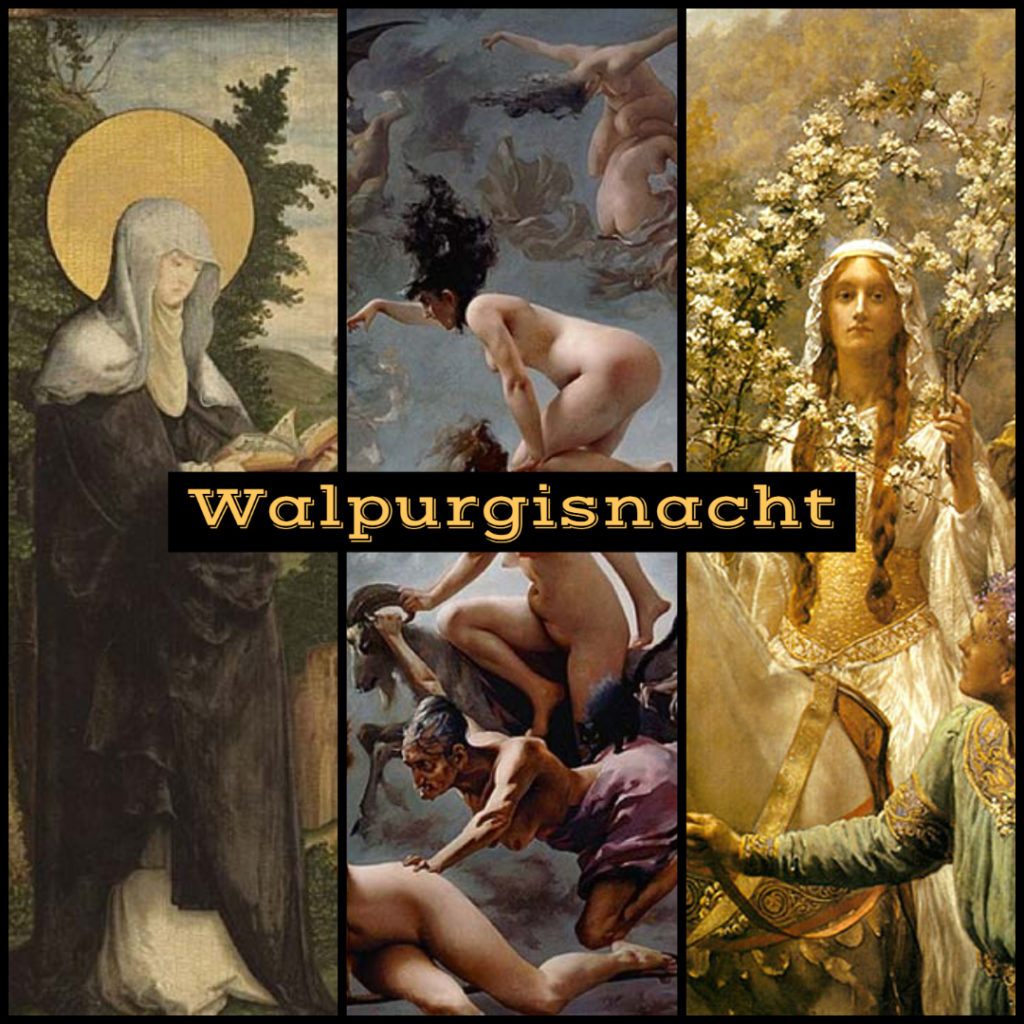
April 30th, the Eve of Beltane is known in Germany, and the Scandinavian countries as Walpurgis Night (aka Walpurgisnacht, and in Finland, Vappu)
Saint Walpurga was born around 710 AD, probably in the English Kingdom of Wessex. She became a member of the community at the Wimborne Abbey, Dorset, and was later summoned by Winebald, her brother, to serve as abbess at his double monastery of monks and nuns at Heidenheim, in modern day Germany.
She died in 779 AD and was buried in Heidenheim. Around 870 AD, her remains were transferred to the Church of the Holy Cross at Eichstätt. This occurred on May 1 and this date has become associated with her ever since.
For nearly 1200 years we have known this festival as the feast day of Saint Walpurgis, a saint of the Roman Catholic Church.
The celebration of Walpurgisnacht, on Beltane Eve however is very much a pre-Christian festival which was extremely important and rather than try to extinguish it the Church forbade the more gruesome and heretical parts, like blood sacrifices and worship of pagan nature spirits, but allowed many other aspects of the celebration to continue.
Directly opposite Walpurgisnacht, and Beltane on The Wheel of the Year, is Samhain, and like Samhain, Walpurgisnacht, is a time when the veil between the worlds is very thin. Witches are said to gather and evil spirits roam the land.
The customs of this night center around banishing the evil winter spirits to clear the way for the spirits of fertility to inhabit the land.
Two important aspects are the lighting of bonfires and dressing in grotesque costumes and making a lot of noise.
Other customs include warding off malevolent forces, by hanging blessed sprigs of foliage from houses or barns, or leave offerings of bread with butter and honey (known as ‘ankenschnitt’) for phantom hounds.
The bonfires, and noise-making likely comes from herders who would leave their livestock out to graze on the hills in the countryside around the spring equinox. In order to scare away wild animals, they would light bonfires, dance around them, and make much noise.
The idea of Walpurgis Night being a witches sabbath took hold of the Romantic imagination in the 19th and 20th century when it became popular in art and literature, most notably in Goethe’s well-known play Faust.
The part of Walpurgisnacht that seems most relevant to bring forward during this season of pandemic is banishing the evil winter spirits to clear the way for the spirits of fertility to inhabit the land.
As we continue to accustom ourselves to quarantine, social distancing, and finding contentment in our own homes and backyards, exploring ways to banish “the evil winter spirits” of dis-ease, uncertainty, anxiety, isolation, fear, boredom to make way for a shift of energy and welcome the life bringing, growing and blossoming energy of Beltane.
- Where are you right now? Stuck in difficult emotions, swinging from one extreme to the other or ready to cautiously invite in positive, life affirming energies as the season turns?
- How can the creative process help you examine the “evil winter spirits” and banish them?
- What are you most looking forward to as we leave Ostara and spring behind and enter in to Summer?
- What dreams and visions are you cultivating that you would like to see come into fullness by Mid-Summer/Summer Solstice?
Leave a Reply